Barley:-A healthy cereal grains
What is Barley?
Barley Grain Benefits: Barley is one of the most important cereal food grains since ancient times belongs to a member of the flowering plant of grass family called “Poaceae or Gramineae”. The botanical name of cultivated barely grain is “Hordeum Velgare L” where the world Hordeum is genus of barely grain & Vulgare is subspecies of cultivated barely grain. Hordeum spontaneum is the botanical name used for wild barley.
The basic chromosome number of the barley genus Hordeum is 7, and all cultivated barleys are belong to diploid species of cereal having 14 chromosomes. (2n = 14).
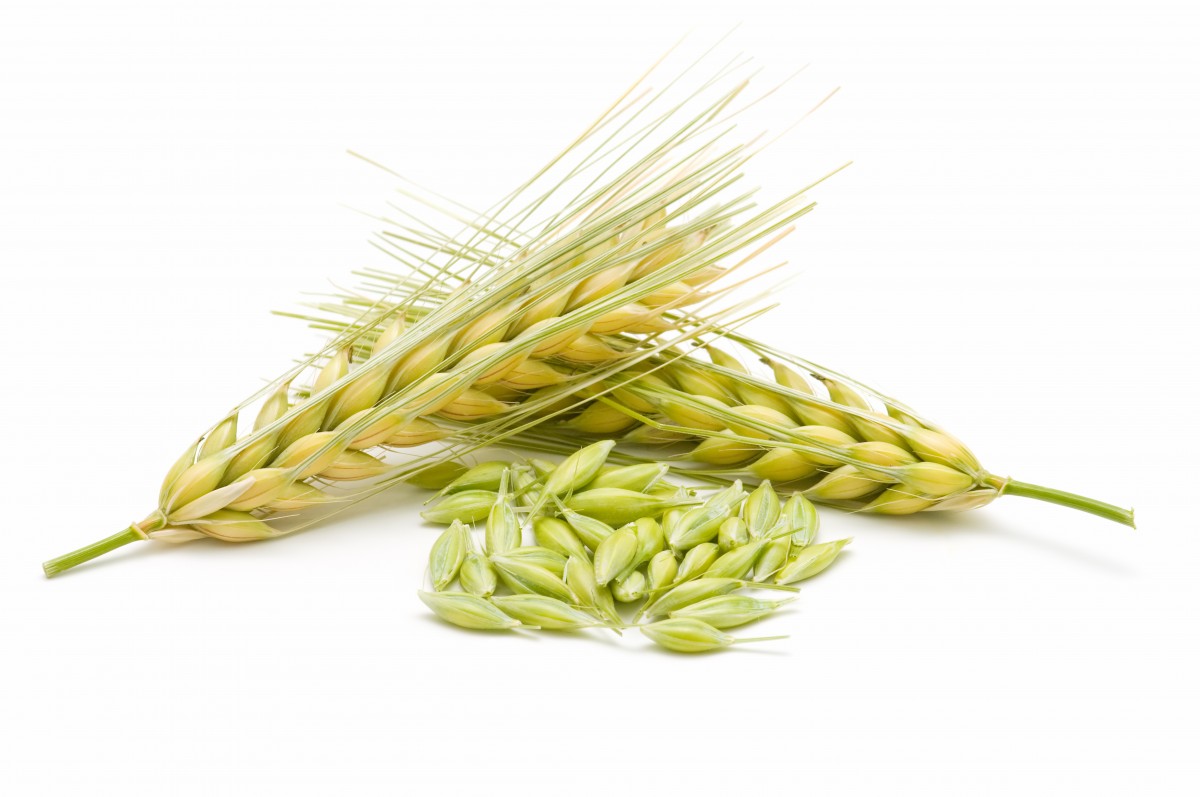
Pic source-Haifa group
Barely is one of the oldest domesticated as well as first cultivated grains crops around 10,000 years ago in Eurasia. It is now cultivated world wide as a cereal grains and ranked fourth in terms of cultivation as well as production after Wheat, Rice & Corn or maize.
Barley is mainly eaten as a food grain either in pure form or in combined form with other cereals. It is commonly used in the preparation of bread & chapatti, soups, stews, cereals, porridge, multigrain’s, baked goods and for the production of several malted alcoholic beverages such as Whisky, beer etc. It is also primarily grown for animal fodder
Common name of barley:-
- Botanical/scientific name:- Hordeum Velgare L (Cultivated barley), Hordeum spontaneum (Wild barley)
- In English or common name:- Barley
- In Hindi & Urdu:- जौ, जाऊ, जव (jau, Jao, Jav)
- In Sanskrit:- aksata, akshata, dhanyaraja
- In kanadda:- jave-godhi
- In Tamil:- barliarisi/ / Valkothumai
- In Telgu:- barlibiyam, dhanuabhedam/ / Pachcha Yavulu
- In Malayalam:- barli, yavam
- In Marathi:- sattu, jav,
- In Konkani:- Barli
- In assamese:- Barlee
- In oriya:- jaba (ଯବ)
- In Punjabi:- Jau ( ਜੌ)
- In Gujrati:- Juvar / Cheno
- In bangali:- Jab , Barli, (বার্লি)
- In French:- orgé
- In Italian:- Orzo
- In Arabic:- shaeir (شعير)
Structure & characteristics of the barley grain.
Barley is a cereal grain that is similar to the wheat grains in appearance. It is the only grains that grown well even in very cold climate such as Arctic region as well as in higher altitude like Himalayan region.
The structures of barley are in spike form and each spikelet contains a floret and each floret develops into a kernel. Generally all the cultivated barley has either two-row spike form where barley kernel formation is symmetrical & even size or Six-row spike form where barley kernel formation are twisted to varying degrees. Only the central kernel in each triplet is symmetrical; the lateral kernels are twisted to varying degrees. All cultivated barleys are either two or six-rowed.
The six-rowed type has the highest yields. The four-rowed types are mainly cultivated & used in high altitudes and northern climates.
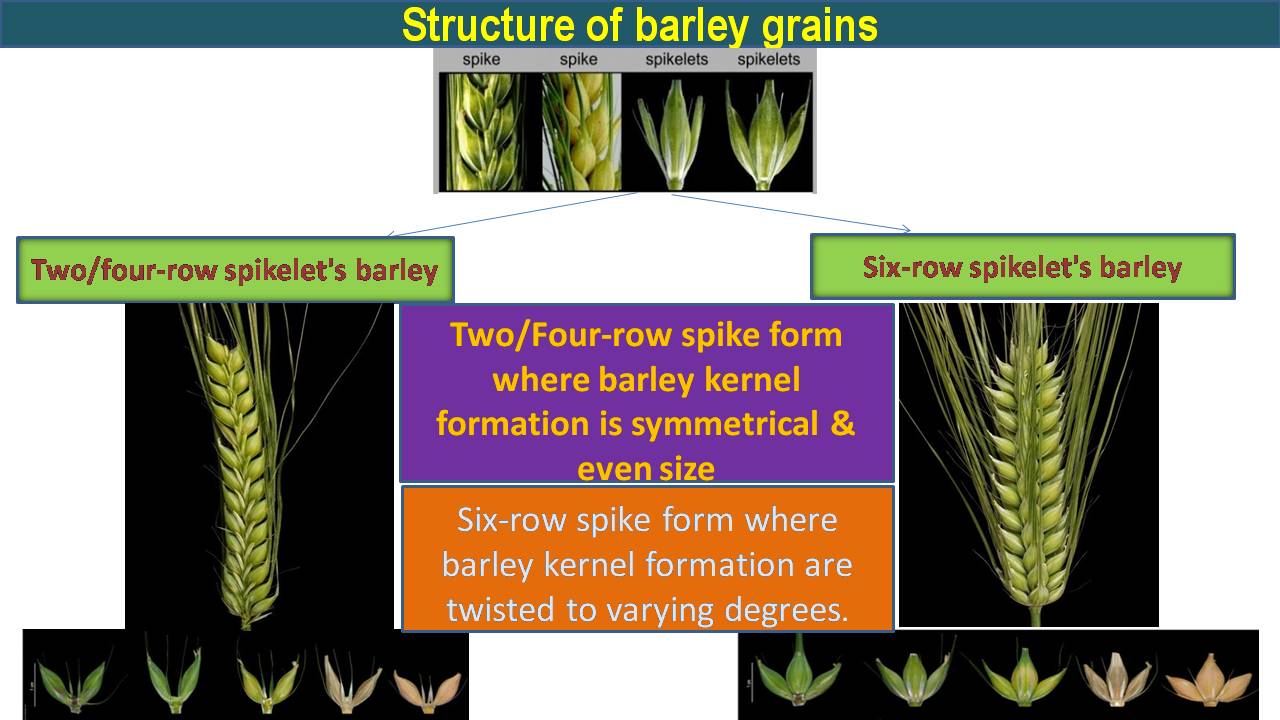
The harvested barley grain are protected or covered by hard structure called Rachilla, palea & lemma collectively called the barley hull or husk.
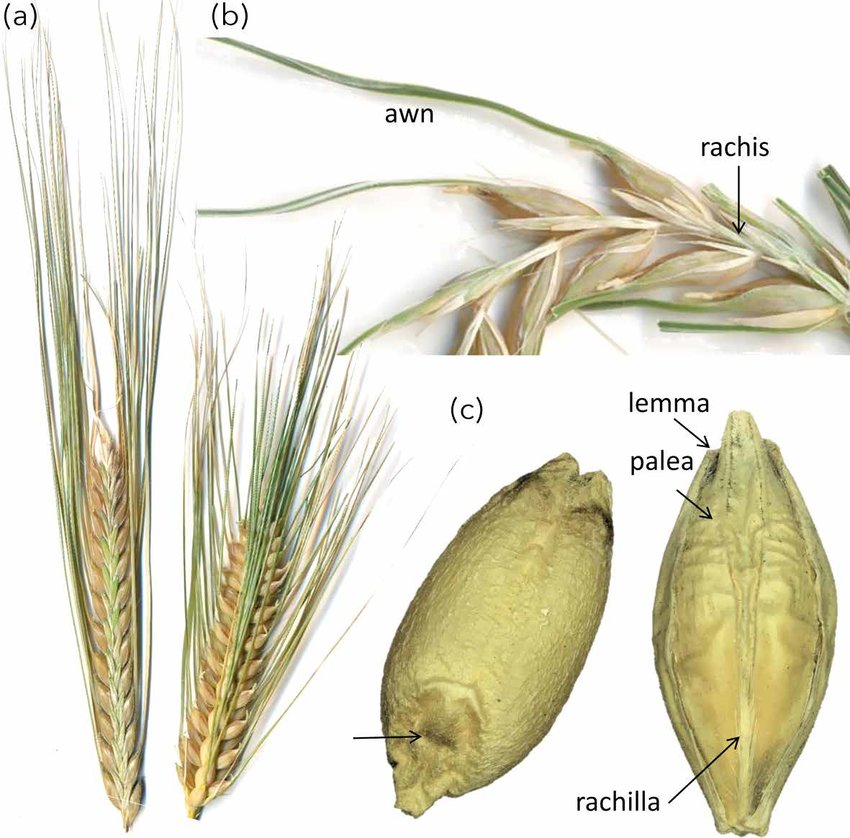
Pic source-Research gate
(a):- Two-row barley & six-row barley spike, (b):-Enlarge view of barely spike (c) Barely grain picture
The barley seed consists of three main parts i.e embryo, germs & endosperm. Embryo is a series of outer layers of cells called the pericarp or Husk which is 10-13% of total weight of barley grains. The husk consists of two distinct overlapping structures called lemma and palea covering the ventral and dorsal side of the grain respectively. The starchy part of the grain called endosperm which represents about two-thirds of the weight (75%) of the barley grains.
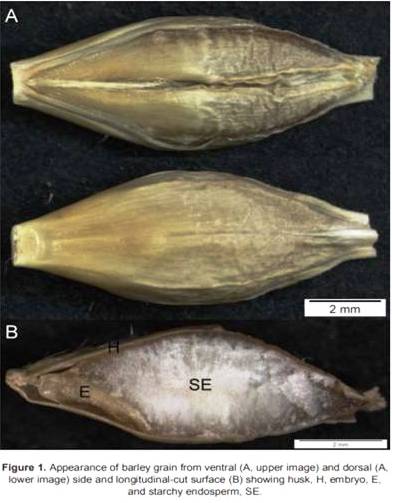
Pic source- www.vttresearch.com
Size & weight of grain:-Barley seeds are approximately eight millimetres in length and its grain has long, smooth and sharp pointed auricles which tend to overlap. The approximate weight of a barley grain upon maturation is 30-60 milligrams.
Size & Color:-. The color of the barley grain is in the range of light tan to yellowish color and it is lighter in weight than wheat & even Rye.
Barley grain contains a complex carbohydrate which is mainly starch with low fat & gluten content and moderately well-balanced protein to meet amino acid requirements as well as vitamins-B, minerals like calcium, phosphorus & antioxidants.
Cooked barley has a slightly chewy texture and nutty flavor, similar to brown rice and farro. It’s a versatile neutral base for any number of dishes, from stir-fry meals to casseroles to protein bowls and breakfast porridge.
A brief history of cultivation of barley:-
It is believe that barley was first grown in the Jordan valley & Abyssinia (Ethiopia) around 10,000 BCE Where people collected seed of barley from Rocky Mountains and planted it in the fertile alluvial soil. The cultivated barely (six-row) have been evolved from a wild barely variety which has two-row hordeum that has been classified as Hordum Spontaneum.
It is the world fourth important cereal crop in terms of cultivation as well as production after Wheat, Rice & Corn or maize.
Major barley cultivation countries worldwide in 2019/2020 are:-
According to the latest statista 2021 report, the top barley producing countries in 2020 are:-
- Russia:-19.94 million metric tons
- Canada:-10.38 million metric tons
- Ukrain:-9.53 million metric tons
- Australia:-9 million metric tons
- Turkey:-7.9 million metric tons
- Kazakistan:-3.83 million metric tons
- USA:-3.76 million metric tons
- IRAN:-3.6 million metric tons
- Ethiopia:-2.3 million metric tons
- India:-1.63 million metric tons
- Iraq:-1.6 million metric tons
- China:- 0.9 million metric tons
Barley cultivation in India:-
Barley is mainly cultivated in India as a winter crop in tropical region as well as summer crop in temperate region. It is a short growing season crop that has good drought tolerance capacity.
In 2020, total barley production in India was 1.687 million metric tons which is less than 1% of total cereal production (total cereal production- 31.38million metric tons). In India it is mainly cultivated in state like Rajasthan, U.P, Madhya Pradesh, Haryana, Punjab, West Bengal, J&K and very little in Bihar, Uttaranchal & H.P region.
State wise barley cultivation status in %:-
- Rajasthan:-44%
- Uttar Pradesh:-21%
- Madhya Pradesh:- 16.45%
- Haryana:-7%
- Himachal Pradesh:- 3.22%
- Uttrakhand:-3.21%
- Bihar:- 1.86%
- Punjab:- 1.7%
- Jammu & Kashmir:-1.18%
- Other- 0.8%
{Data source-International journal of chemical studies 2019; 7(3): 1562-1565}
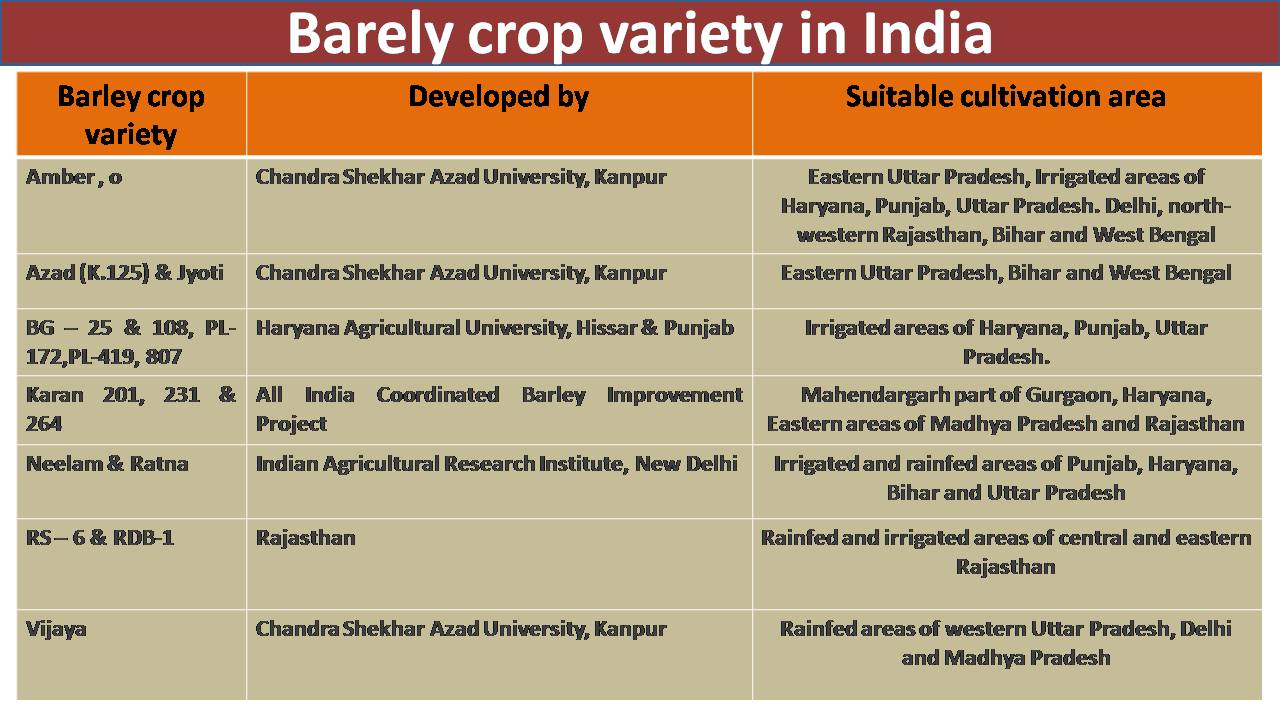
Types of barley products:-
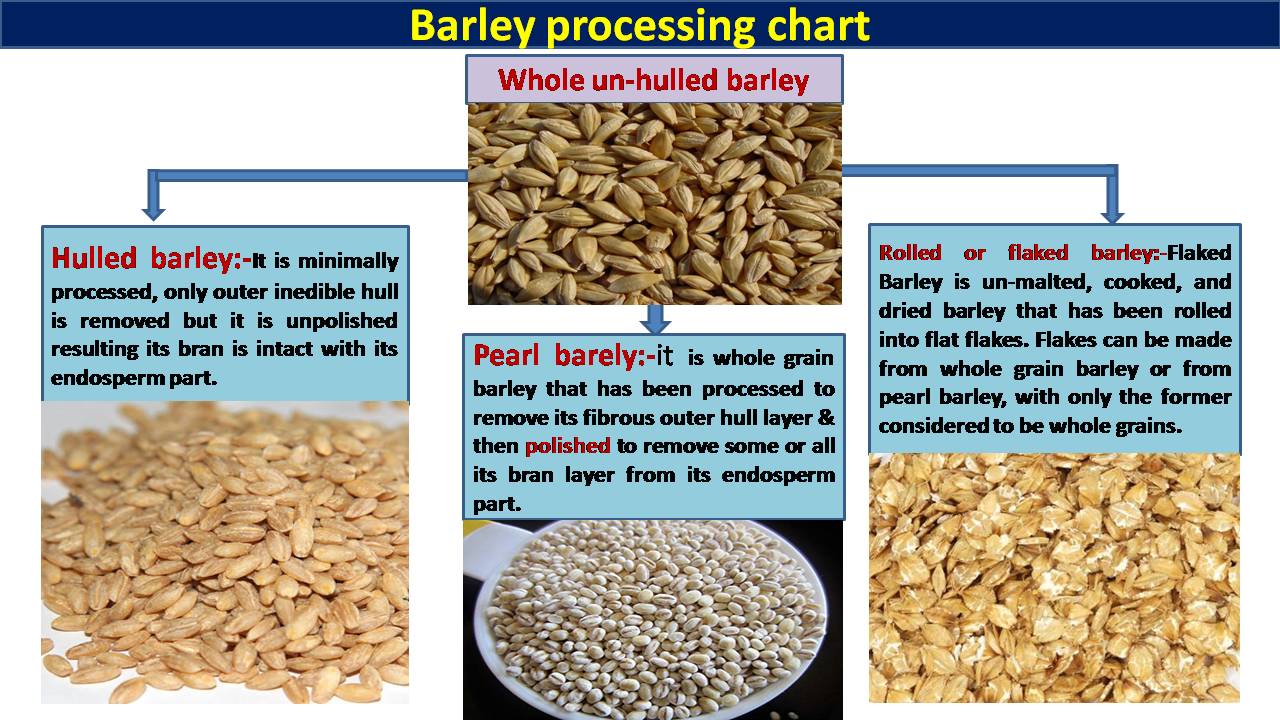
Un-hulled barley:- Whole barley grains in their tough outer husk. It is the purest form or truly whole barley grain which is not processed or milled or polished.

Pic source-joseph’s grainery
Hulled Barley (Sometimes called Dehulled Barley):-
It is minimally processed by way of rolling/tumbling action to remove only the tough inedible outer hull or husk that is tightly attached to whole barely grains. Hulled barely is considered as a whole grain whose only outer inedible hull is removed but it is Unpolished resulting its bran is intact with its endosperm part. Due to presence of bran, it will have darker color. Hulled barley is chewy in nature and rich in fiber content and consider as healthiest kind of barley. It takes an hour or longer to cook.

Pic source-Dr.Oz
Pearl barley- Pearl barely is whole grain barley that has been processed to remove its fibrous outer hull layer & then polished to remove some or all its bran layer from its endosperm part. Fine barley flour is prepared from milled pearl barley. It is the most popular form of barely available in consumption due to it cook faster and is less chewy than other types.
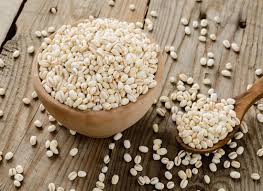
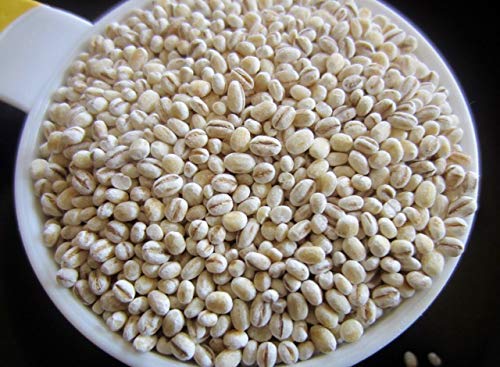
Pic source-Satvyk & amazon.in
Technically pearl barley is considered as a refined grain and is very healthier & cooks more quickly because some of its bran may still be present and the fiber in barley is distributed throughout the kernel, and not just in the outer bran layer.
Pearled barley gets its name due to pale shine color which is obtain after polishing the hulled barley grain so that most of its bran layer is removed from the endosperm part of the grain. Pearl barley is best for making risottos.
Pot barley (Scotch barley): Pot barley also called scotch barley and it is less polished version as compare to pearl barely. Pot barley is milled just three times, so that part of the bran layer still remains with its endosperm making is more nutritious and fibrous grain. It is usually added to soups and stews.
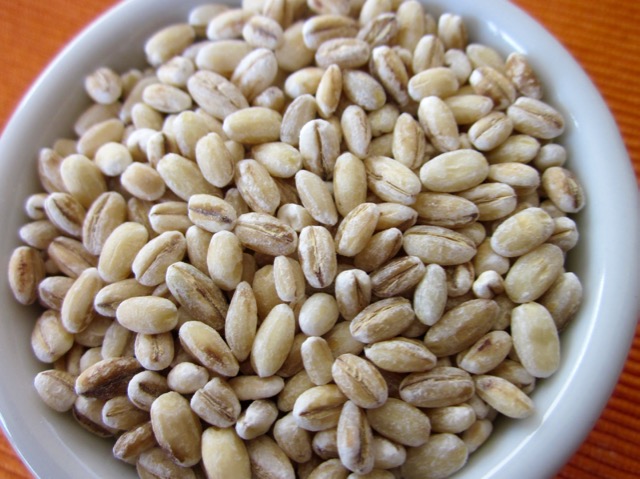
Pic source-myfavouritepasstime
Flakes (flaked barley): Flaked Barley (grains from which the husk and surface layers have been removed) is unmalted, cooked, and dried barley that has been rolled into flat flakes. They are usually cooked and offered as a hot cereal, but they can also be mixed into muesli and baked goods.
To produce flaked barley, whole barley (graded to remove thin grains) is cooked in hot air at 428°F–500°F (220°C–260°C). During cooking the softened material becomes firm with a moisture content of approximately 4%. Flaked barley has an extract value of 72% on a dry weight basis. It imparts a rich, grainy flavor to beer and is used in many stouts, particularly Irish stouts, enhancing head formation and foam stability.
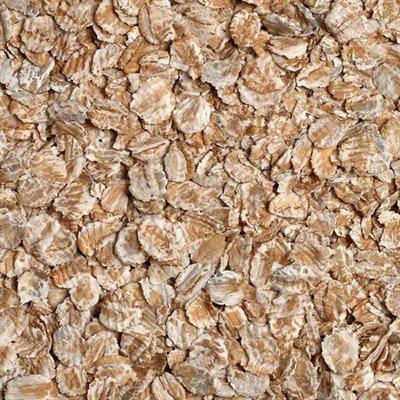
Pic source-home fermenter
Barley grits:- When barley kernels are cut into several pieces, they become grits. It is hulled barley grains that have been toasted and then cracked. They can be cooked and served in place of rice or breakfast cereal.
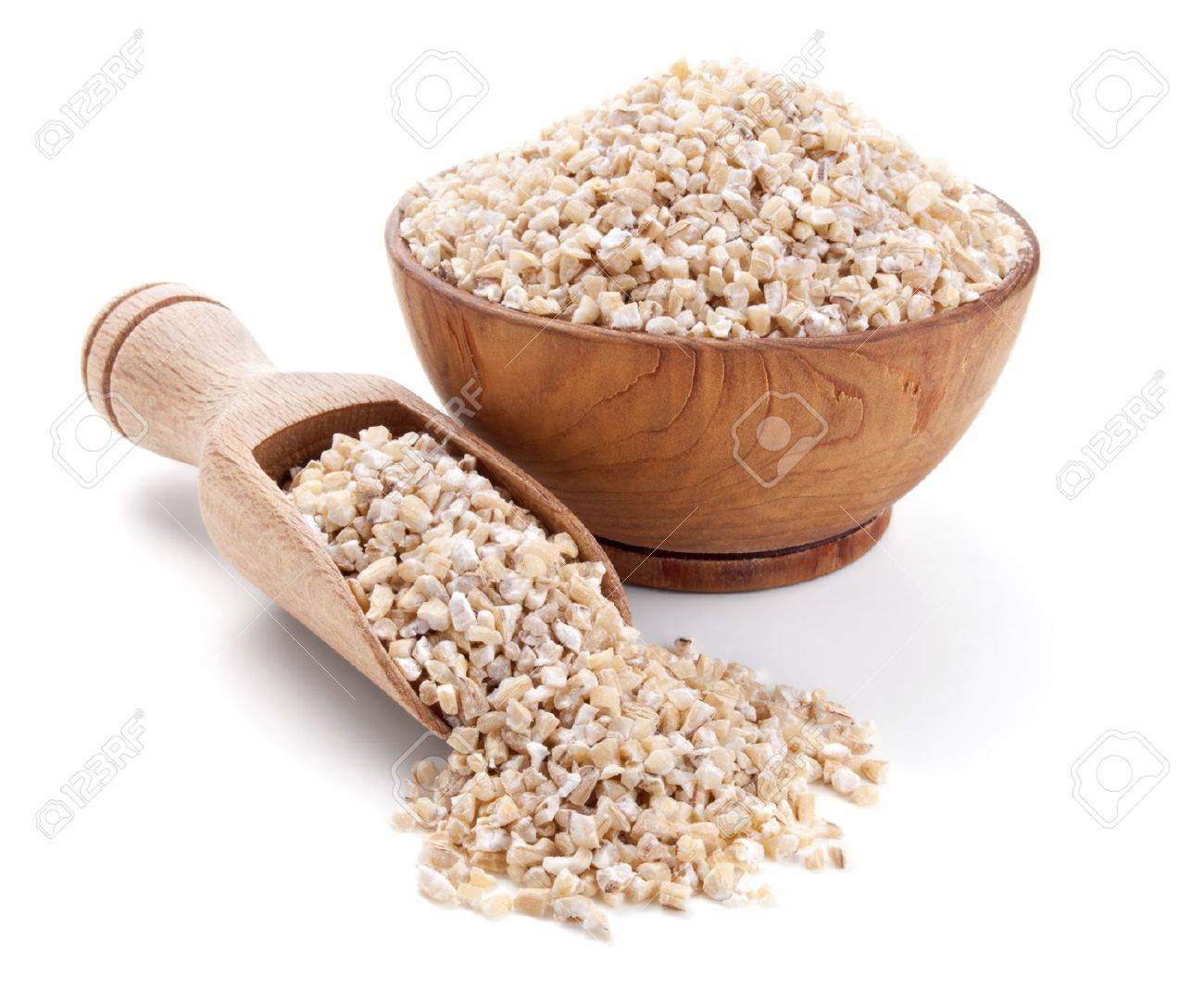
Pic source-123 RF
Barley Flour;- Barley flour is prepared by milling of Barley groats to make coarse barley flour and pearl barley is milled to make fine barley flour. Malted barley flour, referred to as malt flour, is prepared from barley malt. Malt flour is used as a diastatic supplement for other bread flours that have low natural diastatic activity. Barley flour is used in baked goods and as a thickener for soups, stews and gravies.
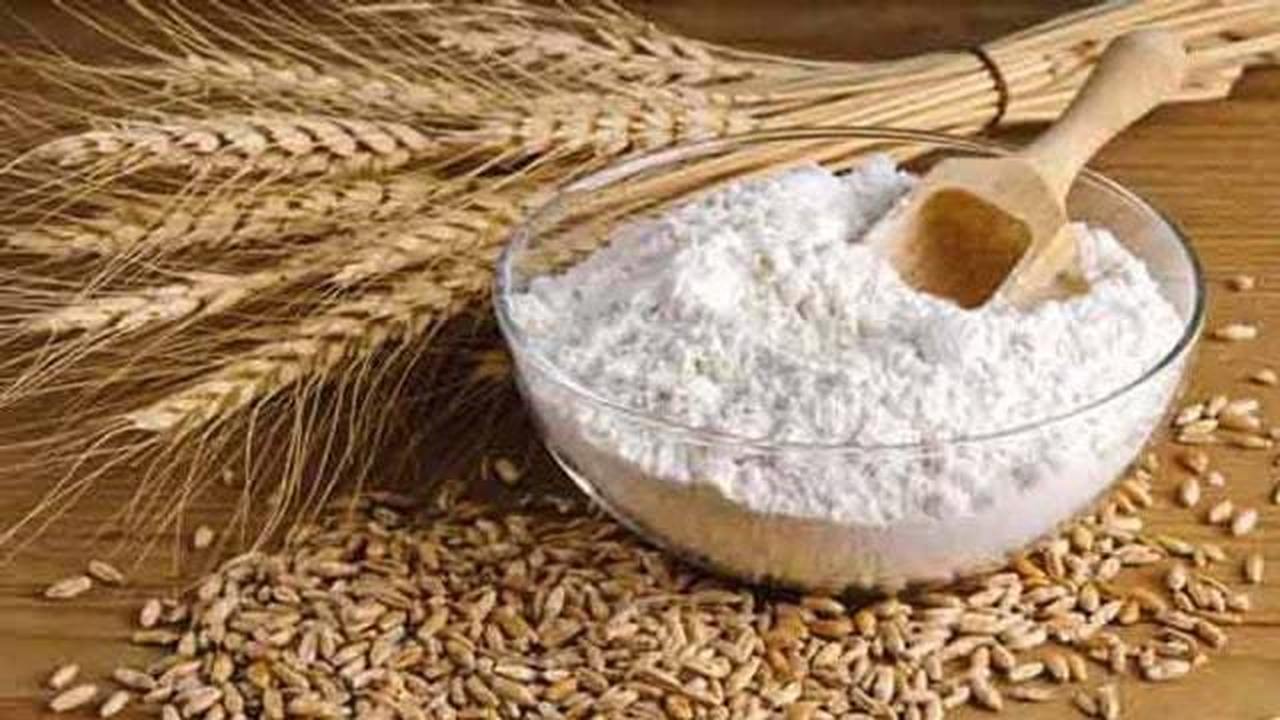
Pic source-Vedic Indian supermarket
Patent barley flour– it is a finer version of barley flour which is prepared by milling pot or scotch barley that has its outer layers removed to a greater degree compared to pearl barley. Patent barley flour is mainly used as an ingredient in infant foods

Pic source-Buy easy.com
Black barley :-Black barely is populary known as purple hull-less barley which is basically from Ethiopia. It got its name due to black in color. This barley does not require any processing or milling as it is hulless variety of barley and can be eaten as a whole grain without processing it. It isn’t raised much because it is relatively low yield. During cooking of black barley it has tendency to maintain its glossy rich dark color and impart a unique nutty flavour with chewy texture.
It goes well with soup, stir fried dishes, salad preparation, rice dish preparation, hot breakfast cereals etc.
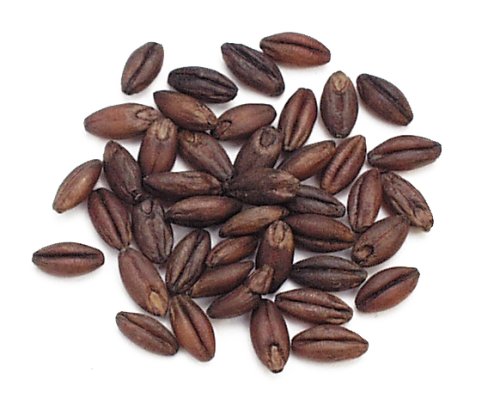
Pic source-Amazon.com
Culinary use of barely:-
Barley is eaten as a healthy cereals due to high in fibre, protein and less gluten content. Barely can be used whole, cracked, hulled, flaked, malted or even as a flour in the preparation of several food items such as risotto ,pilaf, soup ,stews, stuffing, side dishes, breads & chapatti, breakfast cereals, porridges, beverages etc.
Barley is a key ingredient in beer and whisky production. Scotch whiskey is prepared with malted barley in Ireland & Scotland. Barley wine is a style of strong beer from the English brewing tradition. A barley wine typically reaches an alcohol strength of 6 to 12% by volume
Malted Barley is used in the preparation of summer drink with milk called Kanji to keep our body cool.
The Tibetians are known to use barley to make tsampa, a flour made by first roasting barley and then grinding it. It is often eaten as a cereal with cheese or salty butter tea. It is also believed to be the Dalai Lama’s favourite breakfast treat.
Barley takes the place of rice in risotto preparation with vegetables like squash, bitter gourd, zucchini and some distinct herbs.
Pearled barley is generally used to prepare healthy salad such as pearl barely salad with exotic fruits such as pomegranate, olive and avocado by drizzling olive oil and lemon juice before serving, barely with red rice salad with kidney beans and apricot, bellpepper stuffed with barely, smoked chicken with pearled barely salad etc.
Barley flour is used to prepare several types of fermented or Non fermented bread. It is generally added to wheat flour, creating a composite flour or multigrain flour. Barley flour is used to make several bakery products like leavened breads, muffins, pancakes, cookies & biscuits etc.
Barley can be used to prepare healthy khichdi, barely risotto, several porridges etc. It is also used to make delicious south Indian Mysore Dosa, Idli, Vada etc.
Barley water:– Barley contains soluble fiber, which dissolve in water and provides useful energy. It is used to make a healthy drink called barley water flavoured with lemon juice & honey. It is prepared by gentle boiling of hulled barley grains & served with honey with lemon. Ancient Greek people used to prepare “Kykeon” a barely water used to cure various ailments. In Britain, barley water is used to drink as hot beverage similar to tea and they flavoured their barely water with lemon rinds, fruit juices & honey. In Italy, barley is also sometimes used as coffee substitute, caffè d’orzo (coffee of barley).
According to Ayurveda, barley water is considered as excellent diuretic properties, which can cures urinary tract infections (UTI) and also helps to maintain our body temperature lower or cool during the summers.
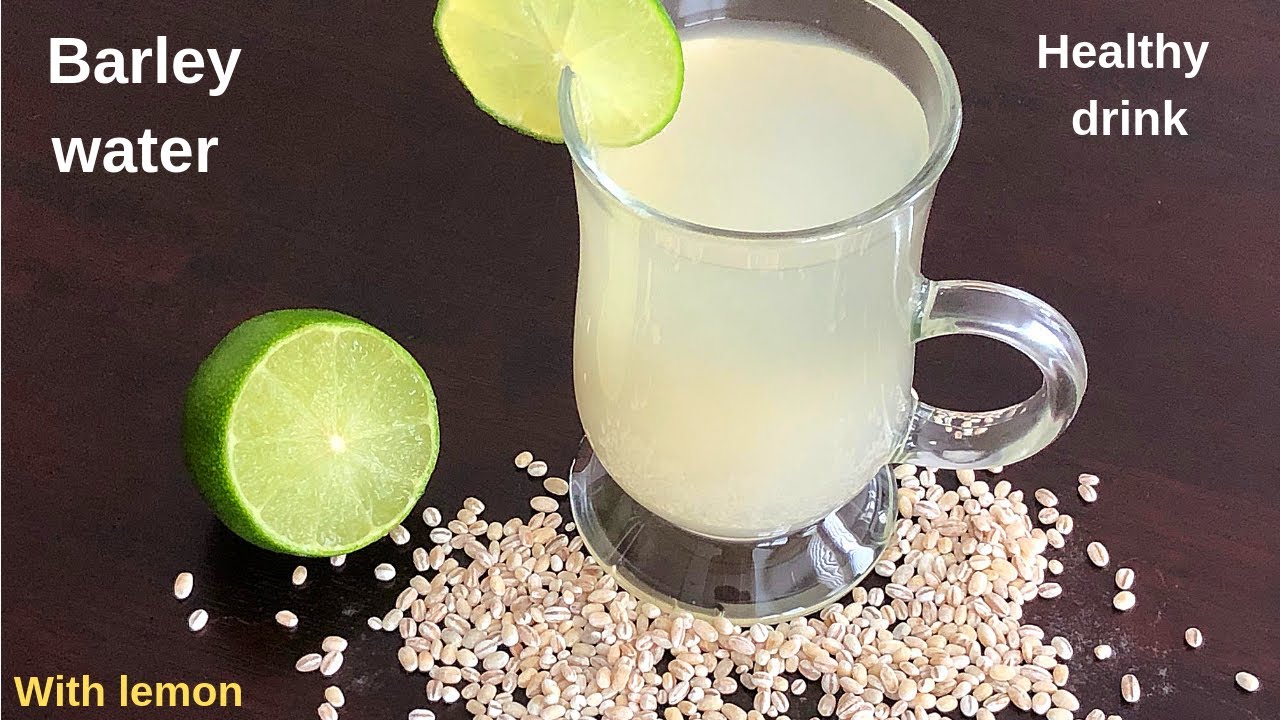
Pic source-youtube
Barely is extensively used to prepare sprout, sprouted barley is generally high in maltose sugar. It is also used to prepare one of the famous Japanese Miso Sauce.
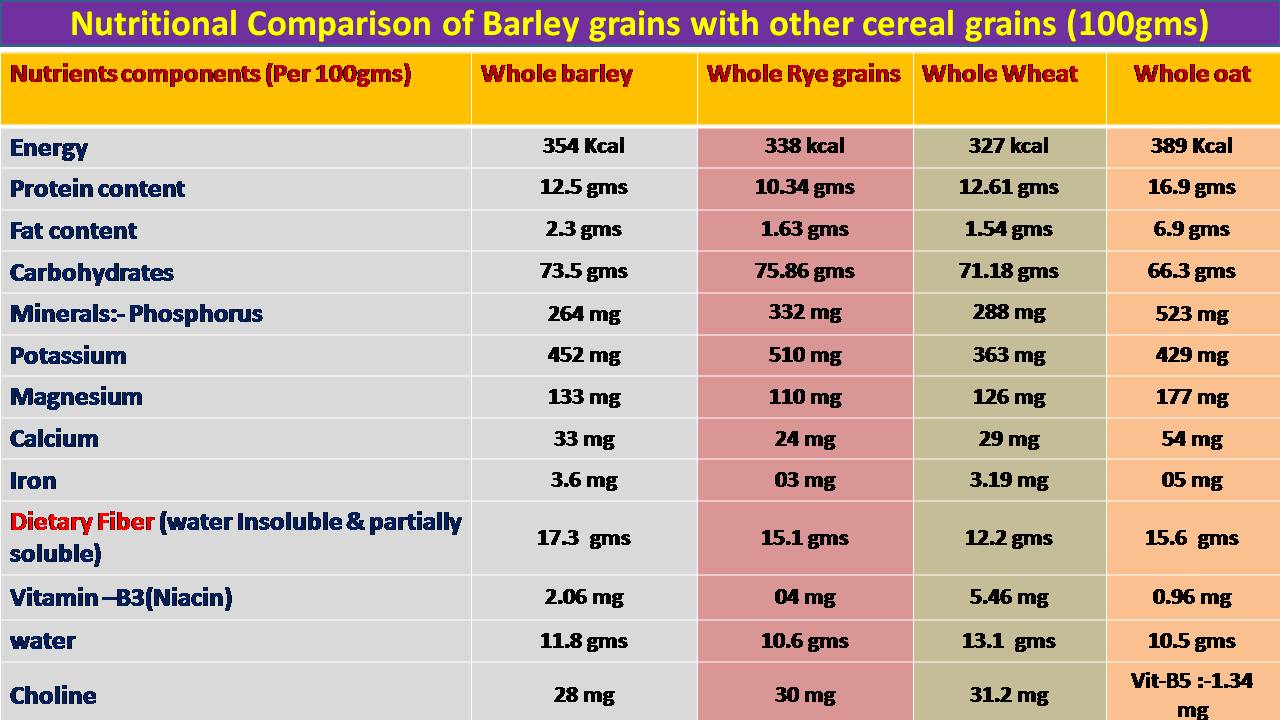
Nutritional value of Uncooked hulled barley (100gms):-
- Calories: 354
- Carbs: 73.5 grams
- Fiber: 17.3 grams
- Protein: 12.5 grams
- Fat: 2.3 grams
- Thiamine: 43% of the Reference Daily Intake (RDI)
- Riboflavin: 17% of the RDI
- Niacin: 23% of the RDI
- Vitamin B6: 16% of the RDI
- Folate: 5% of the RDI
- Iron: 20% of the RDI
- Magnesium: 33% of the RDI
- Phosphorus: 26% of the RDI
- Potassium: 13% of the RDI
- Zinc: 18% of the RDI
- Copper: 25% of the RDI
- Manganese: 97% of the RDI
- Selenium: 54% of the RDI
(Source-healtline.com)
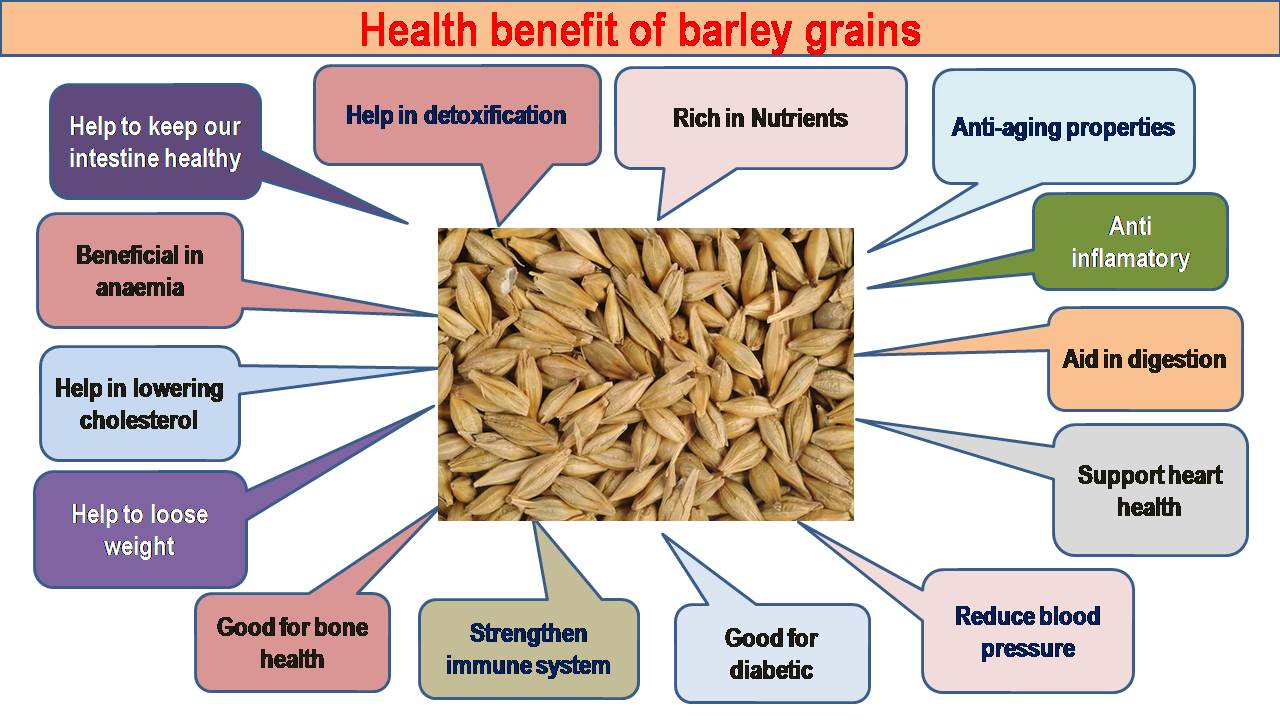
Ref-
All India Coordinated Research Project (AICRP) on Wheat & Barley
Indian council of agricultural research (ICAR)
Fao.org
https://www.cabi.org/isc/datasheet/27662
International Journal of Chemical Studies 2019; 7(3): 1562-1565
https://www.newworldencyclopedia.org/
https://www.farmingindia.in/barley-crop-cultivation/
Department of Agriculture, Co-operation & Farmers Welfare, Ministry of Agriculture & Farmers Welfare, Government of India
https://www.statista.com/statistics
http://www.fao.org/faostat/en/#data/QC/visualize
https://www.berkeleywellness.com/
https://wholegrainscouncil.org/
healtline.com
The spruce eat
Science direct
Researchgate
Ndtv food
Times of india
Economic times
BBC Food
